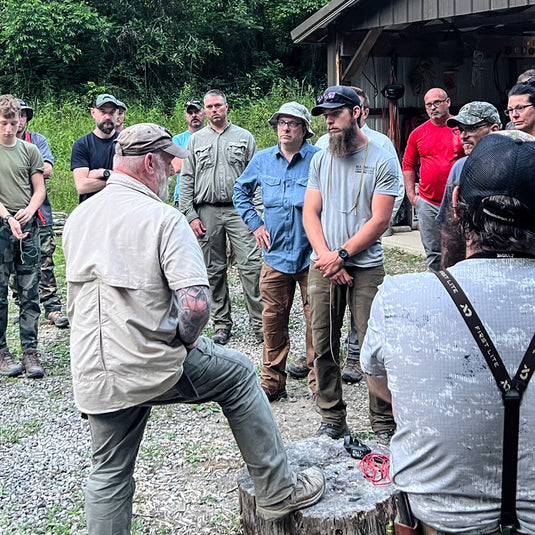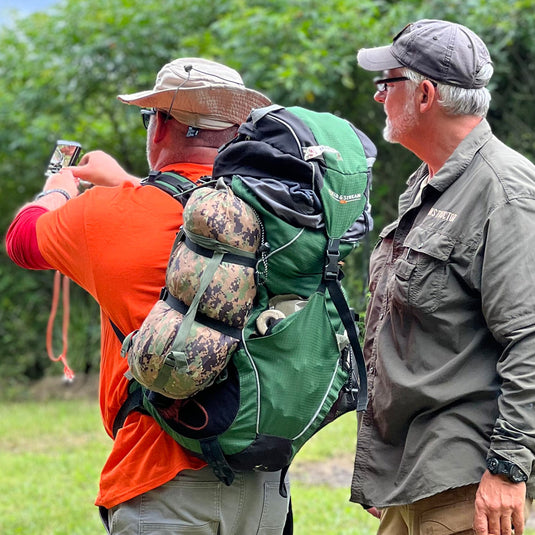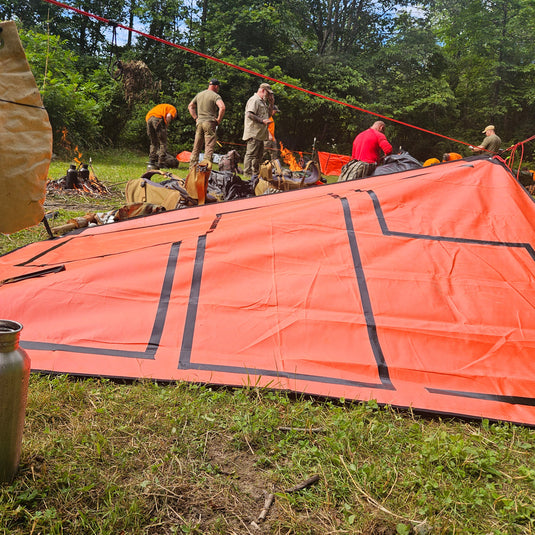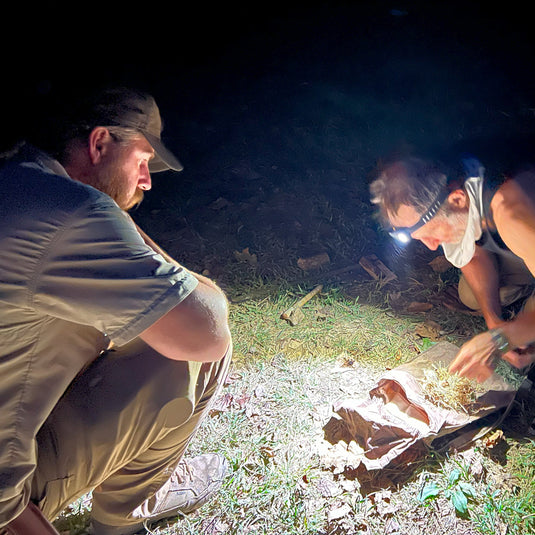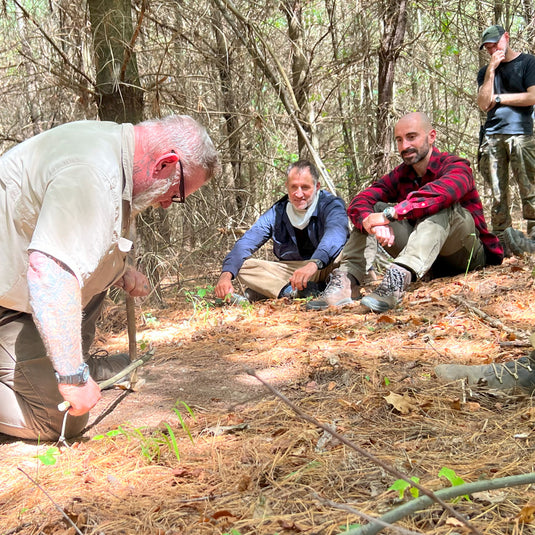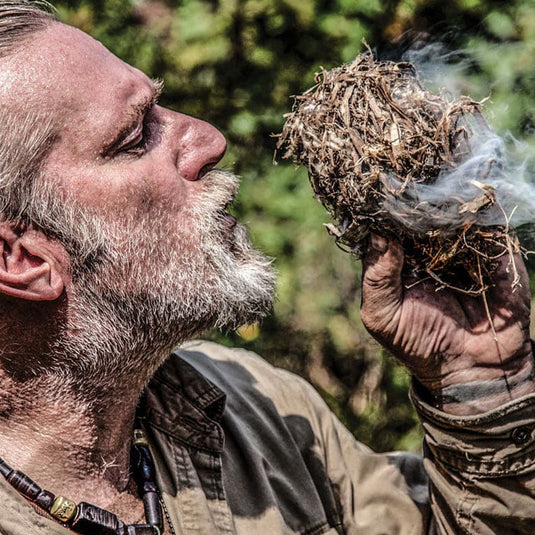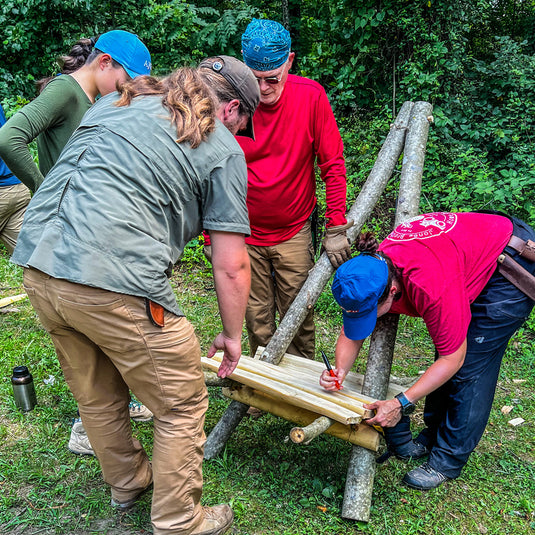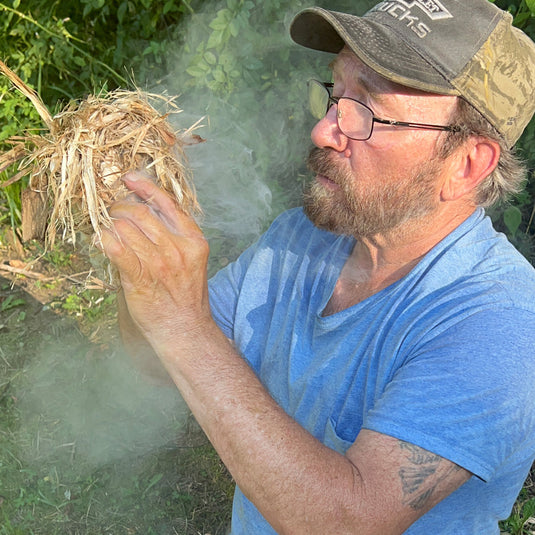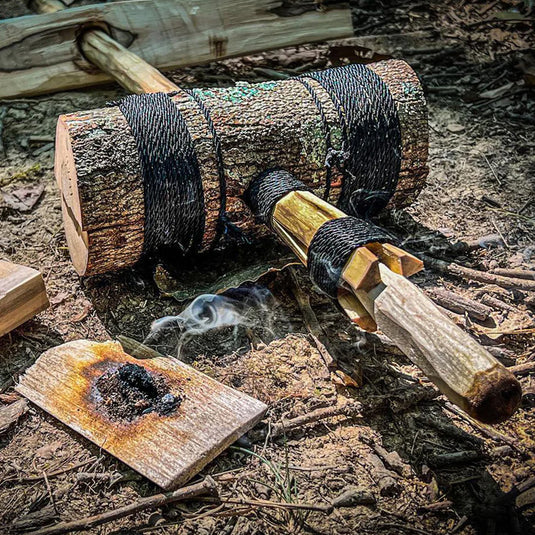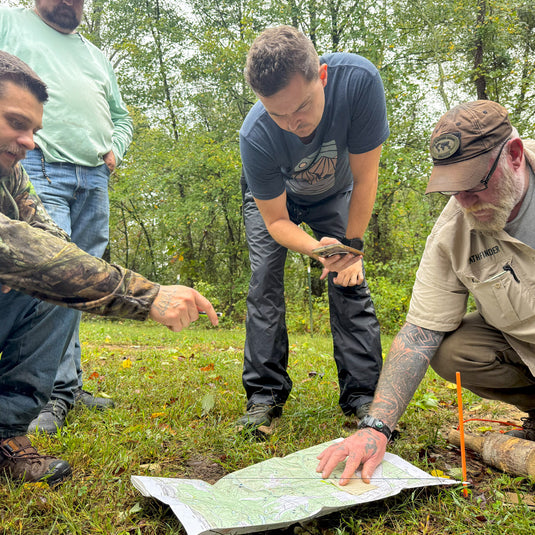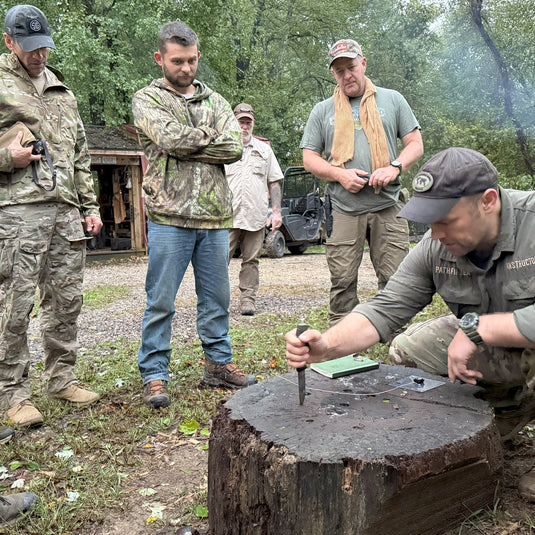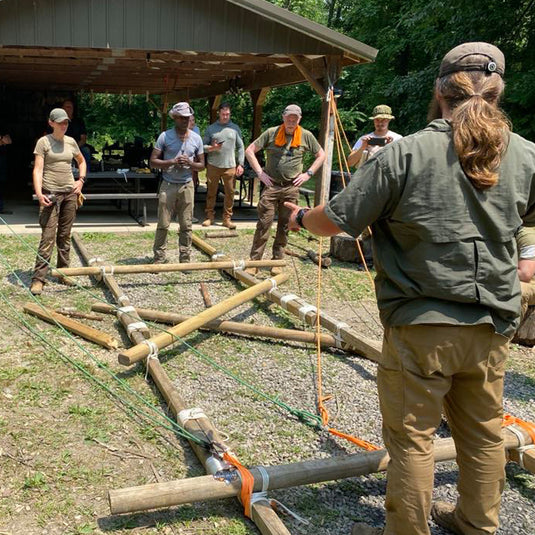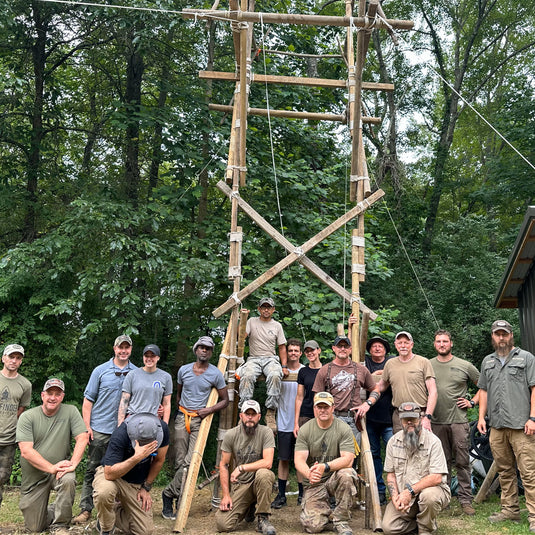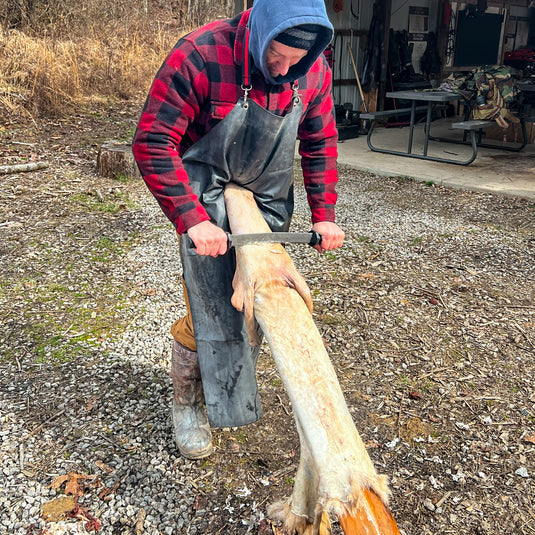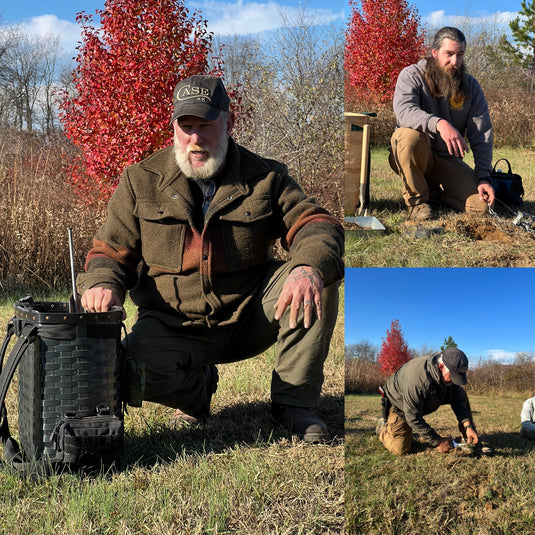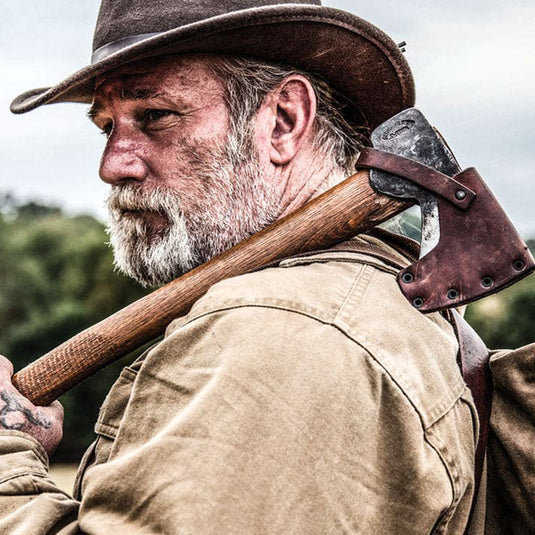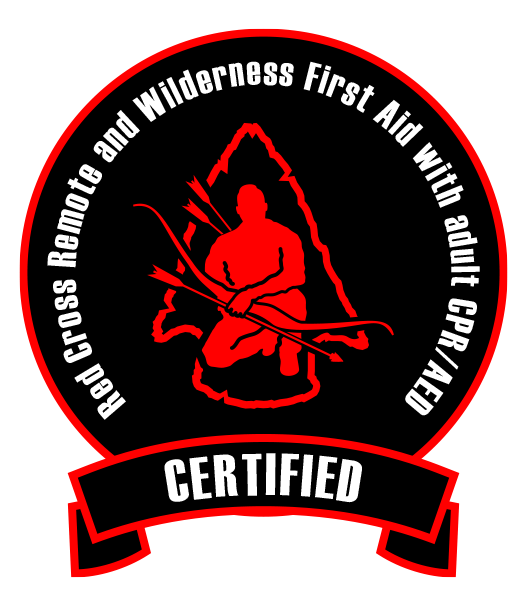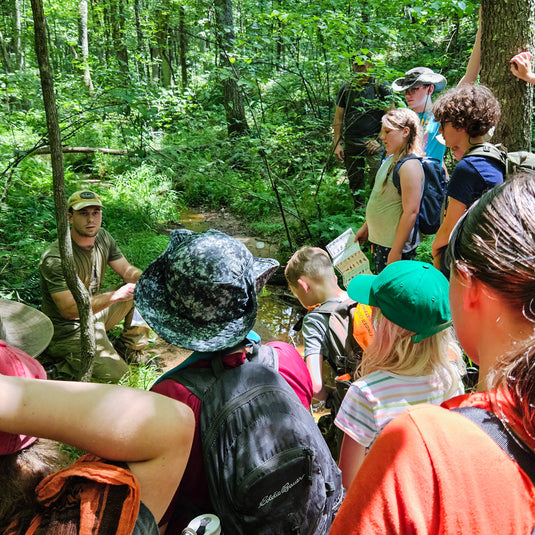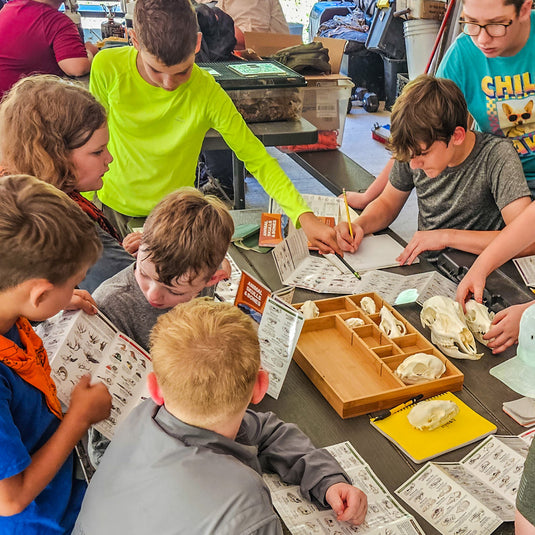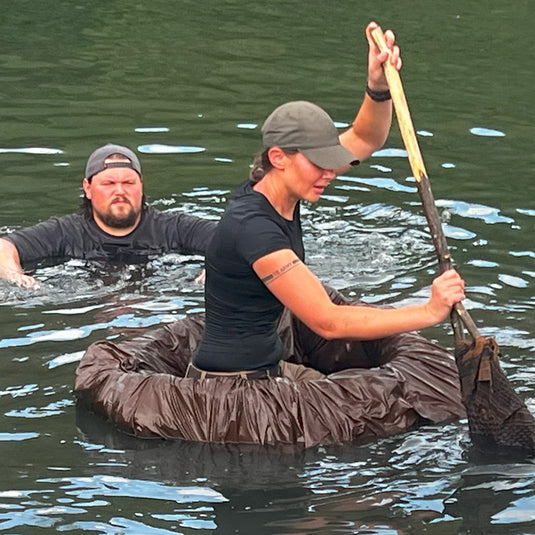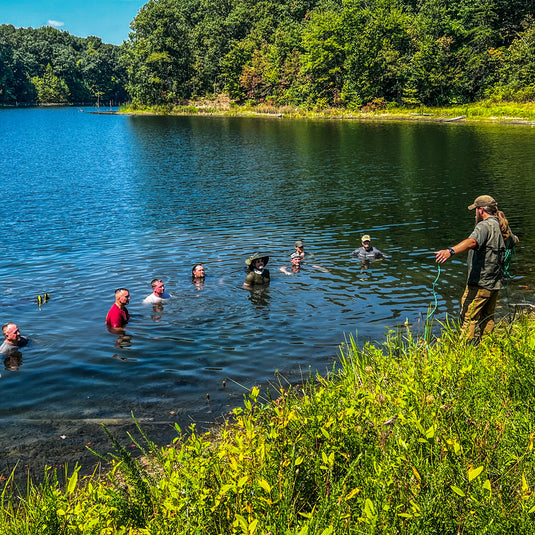Survival Training
17 productsIn most cases, survival training is done in tiers or levels. This means that you would usually start with introductory courses and make your way to the top until you’ve become advanced.
Some example courses of survival training may be on a variety of topics, like:
5.0 / 5.0
(51) 51 Translation missing: en.genaral.accessibility.total_reviews
5.0 / 5.0
(10) 10 Translation missing: en.genaral.accessibility.total_reviews
5.0 / 5.0
(7) 7 Translation missing: en.genaral.accessibility.total_reviews
5.0 / 5.0
(6) 6 Translation missing: en.genaral.accessibility.total_reviews
5.0 / 5.0
(1) 1 Translation missing: en.genaral.accessibility.total_reviews
5.0 / 5.0
(1) 1 Translation missing: en.genaral.accessibility.total_reviews
5.0 / 5.0
(1) 1 Translation missing: en.genaral.accessibility.total_reviews
Why Should I Take Survival Training?
The most critical outcome of survival training is gaining knowledge on survival skills. Knowing basic survival skills can help make the difference between life and death in emergencies.
Survival training will teach you how to cope and thrive in wilderness environments, where you’ll have basic knowledge on:
- First Aid: Whether you or someone in your group experiences a cut or a bone fracture, you’ll need to know what to do.
- Shelter: Survival training will teach you how to gather and build your shelter so that your location is correct, insulation is adequate, and your heat source is close by (and not a danger to your shelter).
- Fire: Fire is one of the most crucial basics you’ll need to master. In survival training, you’ll learn how to build a fire, keep it going, and how to use a campfire to cook.
- Water: Survival training will teach you how and where to find water sources for your camp and how to filter it to be safe for consumption properly.
- Food: Survival skills will teach you what food sources are available, how to set traps and snares, and which food sources are dangerous or poisonous.
- Navigation: Map reading, compass reading, and celestial navigation are all essential survival skills, and survival training teaches you how to do so.
What Should I Do to Prepare For Survival Training?
The first thing you should do to be prepared for survival training is to have an open mind and be ready for a challenge. Survival training is designed to teach you how to cope in certain situations, respond to emergencies with a clear head, and prepare you with necessary bushcraft skills so that you have an answer to any situation.
As well as mentally preparing yourself, you should also physically prepare. This means hiking, walking a few miles at least 3 - 5 times a week, and working your pack weight up until you can handle at least 50 pounds.
How Do I Become a Certified Survival Instructor?
If you’re interested in becoming a certified survival instructor, then you’re in luck because there is a high need for expert guides all across the country. Your duty as an instructor will be to teach, challenge, and educate both youth and adults on basic bushcraft and survival knowledge so that they can comfortably apply their techniques and skills in real-life scenarios.
First thing’s first: You don’t need to be an expert already to become a certified instructor. In fact, many certification courses can educate you over the course of several months, which lead up to the certification graduation. There is no easy way to become a certified instructor: If you want to be one, you’ll have to put in the time and effort.
Finally, once you graduate, you’ll officially be certified so that you can begin working with bushcraft or survival schools and programs all across the country.
Can Kids Do Survival Training?
Kids can absolutely do survival training. In fact, many professionals encourage people to begin their training when they are young. Not only does it increase your child’s odds of survival in an emergency, but taking part in a youth survival training course also helps build character, increase outdoor appreciation, and may even create lifelong friendships with other kids in the group.
What Gear Should I Bring?
THIS GEAR IS REQUIRED TO ATTEND:
- Full Tang Knife 6” Maximum
- SAK or MT
- Smaller Carving Knife recommended Mora 510 Folding Saw
- 21” Buck Saw Blade
- Axe minimum 2# Head/20” Handle
- Crooked Awl
- Hook Knife or Mocotaugan
- Horse Hoof Rasp
- Fencing Pliers
- Wire Brush (for cleaning rasp)
- (3) Bic Lighters
- (2) Ferro Rods Min ½”x5”
- Magnification Lens 5x 2” Diameter
- Flint and Steel Kit
- (2) Tarps - minimum 6x8 recommended at least 1 should be an 8x10
- Wool Blankets (2) Twin or (1) Queen Size
- (3) 6Mil Contractor Bags
- (1) Reusable emergency Space Blanket
- (1) 30L Dry Bag
- (2) 32oz Water bottles with Nesting Cups
- (2) 64Oz Bush pot
- (2) Rolls #36 Bank Line
- (1) Roll # 6 Bank Line
- 100’ Para Cord
- 20’ Rope or Webbing min ½” Rope or 1” tubular webbing
- (6) Tent Stakes
- (1) Pair Leather Wok Gloves
- (2) Shemagh (1 recommended to be Orange)
- (1) 100% Cotton T-Shirt XXL (ORANGE)
- (1) 2” Duct Tape Roll
- (1) 1” Duct Tape Roll
- (1) Compass SUNTO MC2 Recommended
- (1) Set Pace Beads
- (1) Map Protractor scaled 1:10,000
- (2) Water Proof Notebooks
- (1) Pkg 8.5x11” Write in the rain Grid Paper
- (1) Headlight with Spare Batteries
- (2) Sail Needles
- (12) 8P Nails
- (6) 1Qt Zip Lock Freezer Bags
- (2) 1 Gal Zip Lock Freezer Bags
- Digital Camera or Cell Phone
- (1) Book “Identifying Trees” Williams
- (1) 2” 3 Ring Binder
- (1) Box #2 Pencils
- Back Pack min 40L (recommended 65L)
- 5 Gal Bucket w/Lid
- Poncho (Mil Spec) recommended
- Hammock and Tarp or Tent and Sleeping Bag
- Ground Mat
- Changes of Clothing both Seasonal and Daily (Expect Rain)
- (2) Pairs of Good walking Shoes/Boots
- Food and Snacks as needed (there is opportunity to leave site for resupply)
- Camp Stove and Fuel for Quick meals (MRS Rocket Recommended)
- Hat with wide brim
- Any daily medications
- Personal Hygiene gear
- Spare Glasses if you wear the

PCI compliant and a Verified Authorize.net Merchant
We accept Visa, Mastercard, Discover, AMEX, and PayPal

We are American Owned & Operated since 2010
DON'T MISS OUT!
PROMOTIONS, NEW PRODUCTS AND SALES! Directly to your inbox.

© Self Reliance Outfitters™ - A Division of The Pathfinder School, LLC.
Indianapolis, IN, USA - All Rights Reserved.

